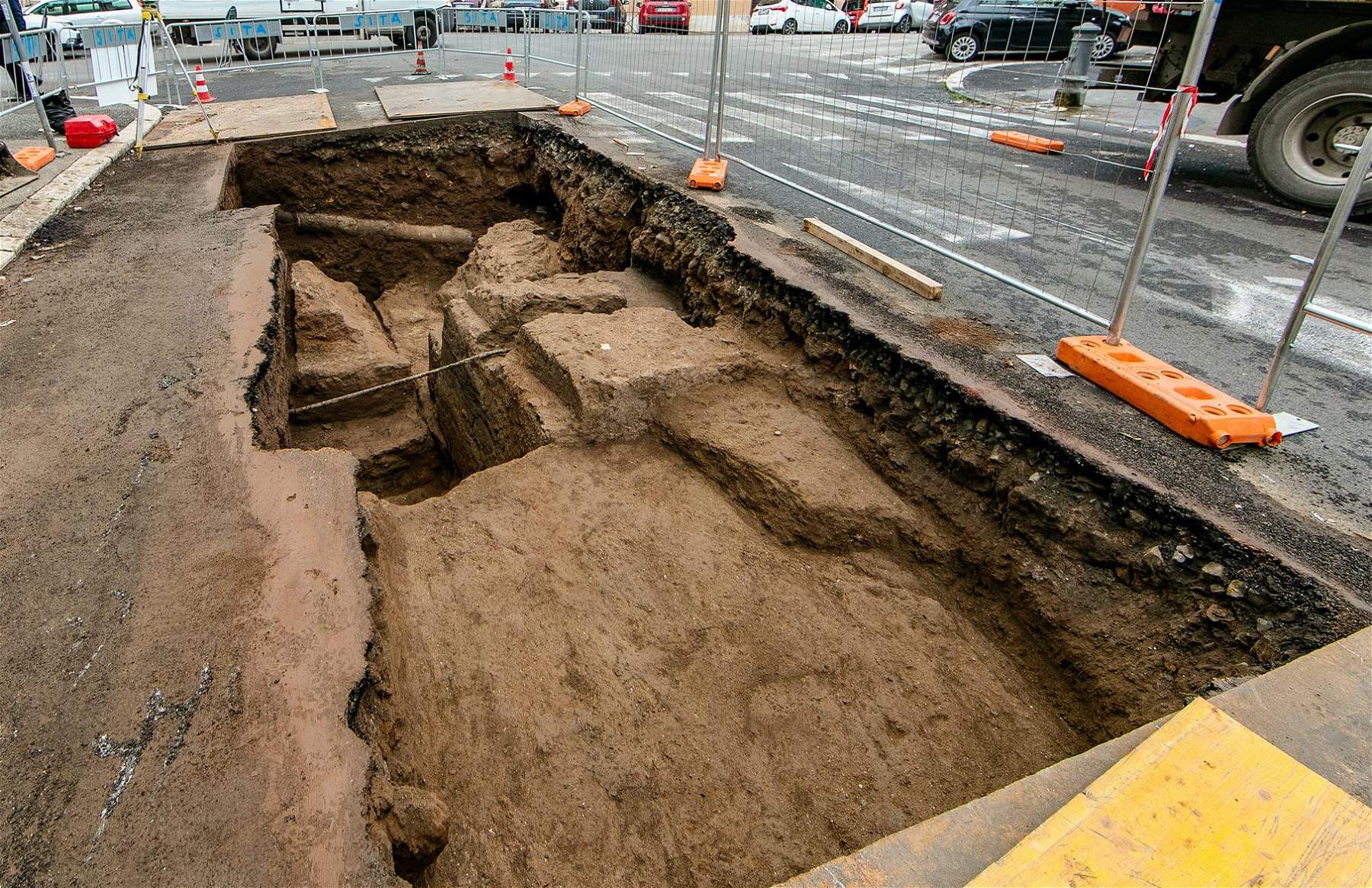Rome, remains of three small mausoleums discovered in Appio Latino district
In Rome, the remains of three small mausoleums have been discovered in the Appio Latino district, along the ancient Via Latina: these are buildings that belonged to a single funerary complex, datable according to experts to a period between the first century B.C. and the first century A.D., which resurfaced during preventive archaeology excavations underway in Via Luigi Tosti for the replacement of some water mains structures. The excavation, carried out by Fabio Turchetta’s Archeo company, is at a site owned by Acea Ato2 spa and the company Sita srl and is directed by archaeologist Angelina De Laurenzi of the Special Superintendence of Rome.
The three structures show a basement in opus caementicium and walls made of yellow tuff blocks in the first building, in opus reticulatum in the second, while for the third only the basement remains. One of the buildings also shows signs of damage from a fire, the probable cause of the abandonment of the complex. The remains of the three mausoleums were found at a depth of about half a meter above the current street level, and from the same excavation other finds also emerged: aceramic cinerary olla, also containing bone remains and in an excellent state of preservation, an inhumation burial in the bare earth of a young man, colored plasterwork, and a terracotta dog’s head. The latter find, which is very interesting, is believed to have been a decorative roof element (similar ones are known to have been used as drips on roof slopes).
It is, explained Daniela Porro, special superintendent of Rome, “a discovery that sheds new light on a very important context, that Via Latina that ran from Porta Capena to Capua and whose route is still visible today in the Parks of the Aqueducts and Tombs of the Via Latina. Once again Rome shows important traces of the past throughout its urban fabric.”
Pictured is the excavation. Photo by Fabio Turchetta
 |
| Rome, remains of three small mausoleums discovered in Appio Latino district |
Warning: the translation into English of the original Italian article was created using automatic tools. We undertake to review all articles, but we do not guarantee the total absence of inaccuracies in the translation due to the program. You can find the original by clicking on the ITA button. If you find any mistake,please contact us.





























